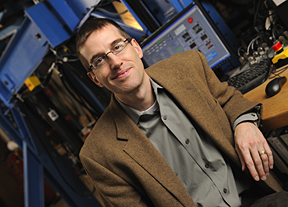
A review of recent advances in the application, analysis and design of cold-formed steel structures over the past five years demonstrates that significant advancements in structural analysis, particularly when it comes to thin-walled structures, are taking place in three primary applications—framing, metal buildings and racks. The review—a summary paper on recent cold-formed steel research for the European Committee for Constructional Steel that was published in its journal Steel Construction—was conducted by Professor Benjamin Schafer, Ph.D., P.E., chairman of the Department of Civil Engineering at the Johns Hopkins University and an internationally recognized innovator in cold-formed steel design. Schafer and his team are working cooperatively with engineering staff of the Construction Technical Program (CTP) at the American Iron and Steel Institute (AISI) to advance cold-formed steel design through research and development.
Dr. Schafer focused his review on load-bearing cold-formed steel structures as opposed to secondary systems and curtain walls. “The behavior of cold-formed steel structures can be complicated due to the thin-walled nature of the sections, so in order to move the design process forward, we had to concentrate on advances in analysis,” Schafer said. “Recent work in Generalized Beam Theory and the constrained Finite Strip Method demonstrate that, when it comes to thin-walled members, significant advances in structural analysis are still possible and desirable.” He cited the Direct Strength Method, as codified in Appendix I of AISI S100, the North American Specification for the Design of Cold-Formed Steel Structural Members, with contributing to the advances and alleviating much of the complexity in thin-walled design.
